
In the tranquil hills of Hakone, six exceptional museums reveal a diverse artistic narrative that transcends time and place. Explore glasswork, outdoor exhibits, Venetian glass, contemporary sculptures, and Japanese crafts in a soul-enriching journey amidst nature's beauty.
1. Venetian Glass Museum
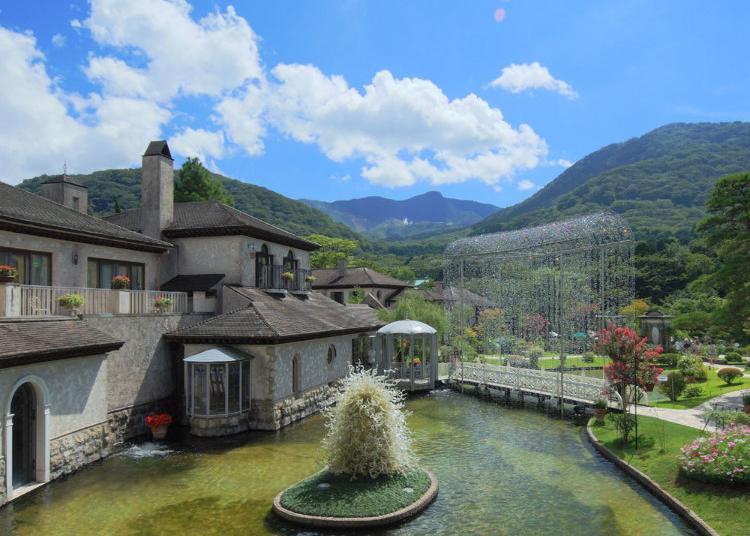
The Hakone Garasu No Mori Museum, translated as the Venetian Glass Museum in Hakone, holds the distinction of being Japan's pioneer museum dedicated to Venetian glass. The premises house two distinct museums: the Venetian Glass Museum, displaying a curated selection of 100 remarkable Venetian glass pieces from the 15th to 19th centuries, and the Modern Glass Museum, which celebrates the innovative spirit of contemporary artists through glass sculptures. The garden offers a panoramic vista of the entire Owakudani Valley, where the "Hikari-no-Kairo," a radiant crystal glass arch, casts a spectrum of seven colors with the sun's touch. Seasonal displays, featuring cherry blossoms, Japanese silver grass, and crystal glass Christmas trees, add a rhythmic charm to the museum's ambiance. Guests are invited to explore the magic of glass creation at the onsite workshop, crafting a personalized masterpiece. Additionally, the museum's restaurant offers a taste of Italy with live canzone performances by an Italian vocalist (six performances daily), creating a melodious backdrop to your exploration. The museum shop completes the experience, with a treasure trove of 100,000 items encompassing Venetian glassworks and accessories, awaiting your discovery.
-

-
Address
940-48, Sengokuhara, Hakone-machi, Ashigarashimo-gun, Kanagawa, 250-0631
View Map -
Nearest Station
Hakone-Yumoto Station (Hakone Tozan Railway)
- Phone Number 0460-86-3111
-
Address
940-48, Sengokuhara, Hakone-machi, Ashigarashimo-gun, Kanagawa, 250-0631
2. Narukawa Art Museum
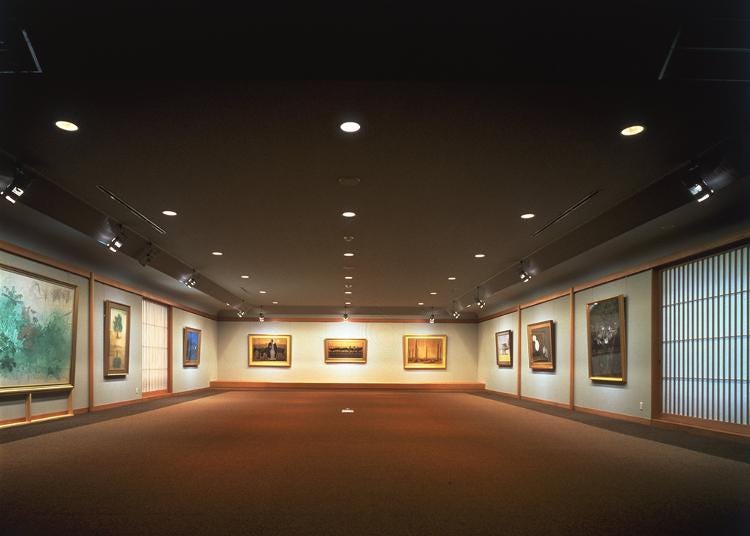
Nestled near the scenic Lake Ashino-ko in Hakone, the Narukawa Art Forum was established with a vision to foster a new epoch in the realm of Japanese painting. The heart of its collection beats with contemporary Japanese artistry, encompassing over 4,000 works. Among these treasures are 150 creations by the distinguished Kyujin Yamamoto, honored with the Order of Cultural Merit, and 40 masterpieces by Ikuo Hirayama, famed for his evocative depictions of the Silk Road. The oeuvre of these two painters forms the cornerstone of the museum’s repertoire. The permanent exhibit unveils a trove of Chinese hidden gems, including intricate works of jade and ivory, colossal balls, and sculptures. Through the changing seasons, the forum welcomes art aficionados to its special exhibitions, held quarterly. Each exhibit is a thematic odyssey, showcasing works transcending the renown of the artists. The museum architecture too, is a silent poem to the beauty of Hakone, offering a breathtaking panorama of Lake Ashino-ko through a sweeping 50-meter-wide window, arguably the finest vista in the region. Amidst this haven of art and nature, the cafe invites visitors to a moment of reprieve, serving powdered green tea in fine porcelain, making the Narukawa Art Forum not just a visual, but a holistic cultural experience.
-

-
Address
570, Motohakone, Hakone-machi, Ashigarashimo-gun, Kanagawa, 250-0522
View Map -
Nearest Station
Odawara Station (Tokaido Shinkansen Line / JR Tokaido Main Line / JR Shonan Shinjuku Line / JR Ueno Tokyo Line / Odakyu Odawara Line / Hakone Tozan Railway / Izuhakone Railway Daiyuzan Line)
- Phone Number 0460-83-6828
-
Address
570, Motohakone, Hakone-machi, Ashigarashimo-gun, Kanagawa, 250-0522
3. Hakone Open-Air Museum

The Hakone Open-Air Museum, heralded as Japan's maiden open-air museum, orchestrates a harmonious dialogue between art and the lush tapestry of nature that cradles it. Spread across a sprawling 70,000-square-meter canvas, the museum proudly exhibits nearly 120 sculptural narratives crafted by modern and contemporary maestros. As you wander through this expansive garden of creativity, the ever-changing whispers of nature accompany your journey through the seasonal beauty that enfolds these artistic expressions. Among the museum's prized features is the Picasso Pavilion, an ode to the legendary artist, housing close to 300 of his creations in a sequential exhibit that offers a voyage through Picasso's prolific career. Complementing the outdoor exhibits are five indoor galleries, each a sanctuary of artistic exploration. The museum's calendar is punctuated with various events and exhibitions, inviting a deeper engagement with the art and the artists. The premises extend the experience beyond visual artistry into a culinary and sensory adventure with its all-you-can-eat restaurants, cozy cafés, shopping arcades, and a rejuvenating foot-bath. Here, the warm embrace of water, flowing directly from the natural hot spring, invites a moment of reflection after a day of artistic exploration, encapsulating the holistic essence of the Hakone Open-Air Museum.
-

-
Address
Hakone-machi, Ashigarashimo-gun, Kanagawa nino flat 1121, 250-0493
View Map -
Nearest Station
Chokoku-no-Mori Station (Hakone Tozan Railway)
2 minutes on foot
- Phone Number 0460-82-1161
-
Address
Hakone-machi, Ashigarashimo-gun, Kanagawa nino flat 1121, 250-0493
4. Pola Museum of Art
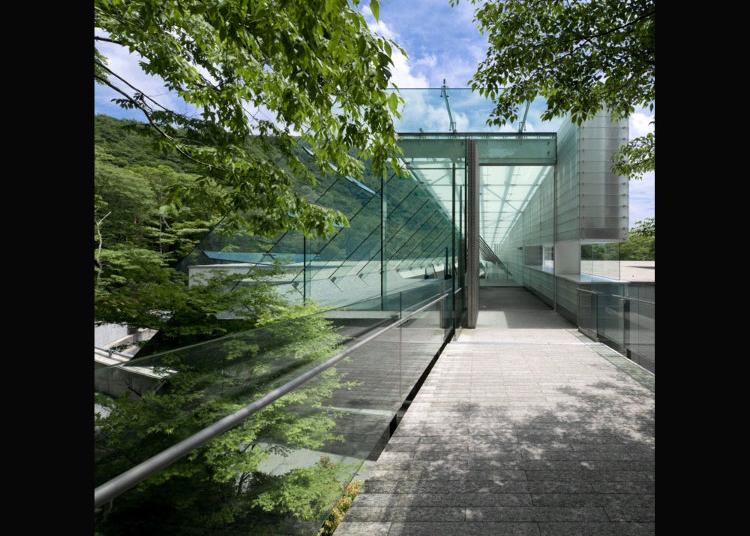
Constructed in the verdant embrace of Hakone's forests, the Pola Museum of Art emerges as a serene dialogue between nature's splendor and the human artistic endeavor. The museum, conceptualized to achieve a “symbiosis between Hakone’s natural beauty and the works of art,” exhibits a humble stature, its structure limited to 8 meters in height, paying homage to the pristine landscape of Hakone. The museum is home to a treasure trove of 9,500 pieces of art, meticulously curated by Tsuneshi Suzuki, the second-generation custodian of the cosmetics powerhouse, Pola. This vast collection spans a spectrum of genres, embracing European and European-style Japanese paintings, traditional Japanese-style paintings, prints, oriental ceramics, glassworks, along with an intriguing array of historical and contemporary cosmetic utensils from across the globe.
In July 2013, the museum unveiled a promenade, inviting visitors to a tranquil stroll amidst the Japanese beech and camellias of the Fuji Hakone Izu National Park. The experience extends into the realms of culinary delight at the museum’s restaurant, where authentic European cuisine is served amidst nature’s calm. The casual café also offers a space for relaxation and reflection. The journey culminates at the museum shop on the first floor, where a curated selection of souvenirs awaits. From French herbal tea, honey, and imported candies to local Hakone crafts, the shop offers a memento of the serene interlude between art and nature, accessible even without museum entry, ensuring the Pola Museum of Art’s essence resonates beyond its walls.
-

-
Address
Mt. Sengokuhara, Hakone-machi, Ashigarashimo-gun, Kanagawa Kozuka 1285, 250-0631
View Map -
Nearest Station
Gora Station (Hakone Tozan Railway / Hakone Tozan Cable Car)
- Phone Number 0460-84-2111
-
Address
Mt. Sengokuhara, Hakone-machi, Ashigarashimo-gun, Kanagawa Kozuka 1285, 250-0631
5. Lalique Museum, Hakone
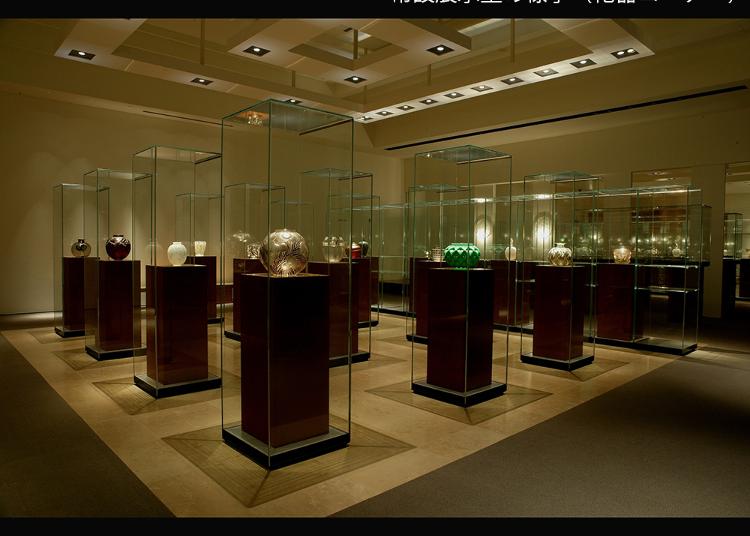
The Lalique Museum in Hakone is a tribute to the enduring legacy of René Lalique, boasting a collection of over 1,500 pieces, including about 200 exquisite jewelry items. The museum is an ever-evolving homage, with the permanent exhibition section frequently refreshed to reflect various themes or the seasons, ensuring a new experience with each visit. The temporary exhibition room delves deeper into Lalique's multifaceted legacy, organizing thematic exhibitions exploring facets such as Japonism, nature, and the intricate craftsmanship synonymous with Lalique.
A unique blend of art and indulgence awaits visitors at the museum's restaurant, where the charm of afternoon tea is served amidst the opulent setting of an “Orient Express” wagon. Surrounded by over 150 pieces of Lalique’s glass panels, guests are transported to an era of elegance as they savor a luxurious café experience within the wagon. This whimsical journey through art and culinary delight requires booking post-admission, promising an exclusive experience in the heart of Hakone, where the magnificence of Lalique's creations and the allure of the Orient Express converge.
-

-
Address
186-1, Sengokuhara, Hakone-machi, Ashigarashimo-gun, Kanagawa, 250-0631
View Map -
Nearest Station
Hakone-Yumoto Station (Hakone Tozan Railway)
30 minutes by bus
- Phone Number 0460-84-2255
-
Address
186-1, Sengokuhara, Hakone-machi, Ashigarashimo-gun, Kanagawa, 250-0631
6. Okada Museum of Art
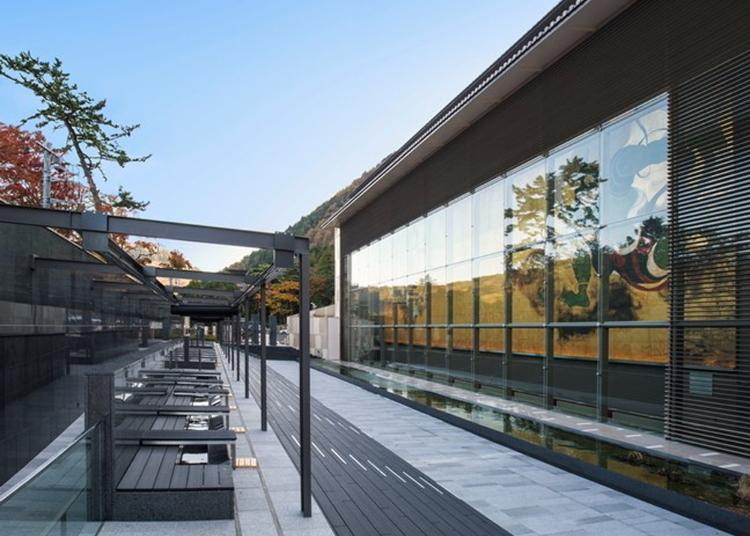
The Okada Museum of Art, inaugurated in the fall of 2013, stands as a harmonious confluence of Japanese and Asian artistic heritage. Housed within its five expansive stories is a regular exhibit of about 350 items, encompassing modern and contemporary Japanese paintings, East Asian ceramics, and a diverse spectrum of other artistic creations. Amidst this rich cultural tapestry lies Kaika-tei, an elegant restaurant reincarnated from a traditional Japanese abode, offering a serene dining experience.
The museum extends its narrative beyond its walls into a picturesque garden, which unfolds a seasonal narrative for a nominal admission of 300 JPY. Further enriching the Okada Museum experience is a quaint café, home to a pure hot spring ashi-yu footbath. Here, visitors can soak in the therapeutic warmth while admiring a colossal mural of Fujin Raijin, melding relaxation with aesthetic appreciation.
-

-
Address
493-1, Kowakudani, Hakone-machi, Ashigarashimo-gun, Kanagawa, 250-0406
View Map -
Nearest Station
Kowakidani Station (Hakone Tozan Railway)
- Phone Number 0460-87-3931
-
Address
493-1, Kowakudani, Hakone-machi, Ashigarashimo-gun, Kanagawa, 250-0406
- Area
- Category
*Prices and options mentioned are subject to change.
*Unless stated otherwise, all prices include tax.
Popular Tours & Activitiess
Recommended places for you
-

Keisei × Keikyu 16-Temple Goshuin Tour: Discover Deeper Tokyo & Yokohama
by: Guest Contributor
-
Ad

Preserving the Beauty of World Heritage Site Shirakawa-go for the Future Through Responsible Travel
-

Simply Oishii Wagashi School Discover Japanese Culture Through Wagashi: A Hands-On Experience!
by: Guest Contributor
-

New Seibu L00 Series Launching in 2026! What to See Along the Tokyo-Area Golden Route
by: Guest Contributor
-

How to Get Don Quijote's Exclusive 2025-2026 Winter Gift (+Tax-Free Savings)
-

[Extended Offer!](12% OFF KKday Coupon) Mt. Fuji Autumn Leaves, Powder Snow & More! 15 Best Tours to Experience Japan in Fall & Winter
Inspiration for Accommodations
-

Enjoy Mt. Fuji from the Comfort of Your Room! Recommended Ryokan with Mt. Fuji View
-

Stay Near the Cherry Blossoms! Hotels for Cherry Blossom Viewing in Tokyo
-

Family-Friendly Hotels with Free Shuttle to Disneyland: Convenient Access for a Magical Stay
-

Top Ranked Hakone Hotels with Mt. Fuji View: Enjoy Stunning Scenery from Your Private Space
-

Convenient Tokyo Hotels with Airport Shuttle: Ideal for Families and Heavy Luggage
-

Stunning Tokyo Tower View Hotels: Enjoy Spectacular Scenery from Your Private Space
-

Convenient Asakusa Hotels with Kitchens: Ideal for Extended Family Visits
-

Experience Luxury: Hakone's 10 Best Five-Star Accommodations
-

Enjoy Mt. Fuji Autumn Leaves! Top Hotels Near the Popular Autumn Leaves Corridor
-

Experience Hakone Fall Foliage from Your Room with Stunning Views
-

Visiting Museums in Tokyo: Introducing The National Art Center in Roppongi
-

Healthcare in Japan for Tourists: What to Do When You Get Sick or Injured in Japan
-

Spending Wonderful Time Alone in Shibuya - Free Cosmetics and a Hundred-Yen Bus!
-

Exploring the Masterpieces: Popular Art Museums in Ueno
-

Tokyo Tsukiji|Tsukiji Area Map & Sightseeing Information
-

Great Sightseeing For Little Money in Shibuya - 3 Choice Spots & Activities
- #best ramen tokyo
- #what to buy in ameyoko
- #what to bring to japan
- #new years in tokyo
- #best izakaya shinjuku
- #things to do tokyo
- #japanese nail trends
- #what to do in odaiba
- #onsen tattoo friendly tokyo
- #daiso
- #best sushi ginza
- #japanese convenience store snacks
- #best yakiniku shibuya
- #japanese fashion culture
- #best japanese soft drinks




















